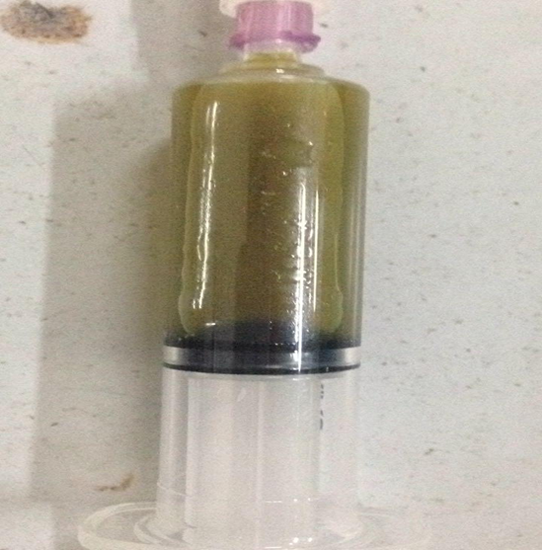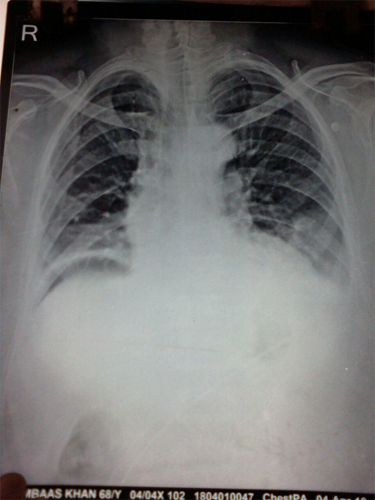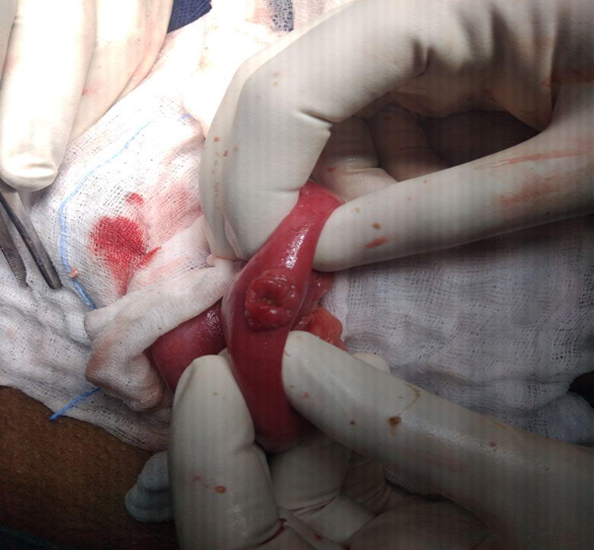Case Report
Volume 2 Issue 4 - 2018
Isolated Small Bowel Perforation After Blunt Trauma Abdomen – A Rare Entity.
(Assistant Professor), Department of surgery, MMIMSR, Mullana, Ambala, Haryana 133207, India
*Corresponding Author: Dr Muzzafar Zaman (Assistant Professor), Department of surgery, MMIMSR, Mullana, Ambala, Haryana
133207, India.
Received: June 23, 2018; Published: July 06, 2018
Abstract
Background: A elderly male patient 68 years presented to emergency department with the complaints of blunt trauma abdomen as a result of road traffic accident.
Summary: Our patient, a 68 years old male presented with history of blunt trauma abdomen due to road traffic accident 12 hours before reporting to our institute. There was no other associated solid organ, spinal, head or chest injury. Patient complained of pain abdomen, vomiting, abdominal distension and inability to pass flatus and stools. Deterioration of the clinical picture raised suspicion of small bowel perforation and patient was taken for immediate laparotomy after proper fluid rescucitation.
Conclusion: The case report indicated that a strong clinical suspicion of intraabdominal hollow viscus injury should be kept in mind whenever we deal with a case of blunt injury abdomen which is not detected by radiological means.
Keyword: Blunt trauma; Bowel perforation; Exploratory laparotomy
Case Description
The main concern during blunt abdominal trauma is injury of solid organs, which is mostly responsible for the mortality. Hollow viscus injuries are much rarer compared to the solid ones. It has been reported that small bowel is the most commonly injured hollow viscus and the third most commonly injured organ in blunt abdominal trauma [1,2].
Isolated small bowel perforations pose additional diagnostic difficulties. Firstly, since it is not associated with any other intraabdominal injury, it cannot be diagnosed incidentally during an Emergency Laparotomy. Secondly, although marked improvement in the quality of CT has been achieved over the recent years, the false-negative rate of CT is still disturbingly high for small bowel perforation [3]. Thirdly, clinical presentation of SBP is usually vague and physical examination inconclusive so suspicion comes only when marked deterioration of the clinical status has been established.
Isolated injuries of the jejunum or ileum as a result of blunt trauma of the abdomen are very rare injuries, and few reports exist in the literature in the form of case reports [4-6]. Patient 68yrs/Male chronic smoker presented to the emergency department with a history of road traffic accident causing blunt trauma abdomen about 12 hrs before reporting to our institute. He was illiterate, from a low socioeconomic background and was a resident of a village in Northern, India. There was no significant past, family and drug history.
On initial examination, patient was haemodynamic ally stable and afebrile. His pulse was-86 per min, BP-110/70mmHg, RR-18/min and oxygen saturation as 94%. His chest, cardiovascular and central nervous system examination revealed no abnormality. Regarding his abdominal examination, it was fully distended, with full flanks, diffuse tenderness all over, with absent bowel sounds. Digital rectal examination was normal. Aspiration under asceptic precautions and usg guided revealed bilious fluid (Figure 1).
His investigations showed an Hb value of 18.7gm%, a total leucocyte count of 5 thousand, normal coagulogram and normal renal and liver function tests. X-rays abdomen upright was normal and chest X ray with bilateral domes of diaphragm showed free gas under right hemidiaphragm suggestive of hollow viscus perforation (Figure 2). Ultrasonography (FAST) whole abdomen showed free fluid in peritoneal cavity with no solid organ injury.
After initial rescusitation, patient was shifted to OR for surgery. Exploratory laparotomy was done .Intraoperative, minimal fecal contamination of peritoneal cavity ,with edematous bowel loops and a single 0.5 × 0.5 cms perforation on antimesenteric border of mid ileum with healthy margins was found as seen in (figure 3 ).
Perforation was closed primarily in two layers using vicryl and silk interrupted sutures .an abdominal drain was kept in pelvic region. After complete haemostasis, wound was closed back and antiseptic dressings done .Postoperatively patient recovered well and was discharged in a stable state.
Discussion
Blunt abdominal trauma can cause bowel perforation by means of deceleration shear, and high-speed motor vehicle crash is one of the most common deceleration mechanisms. Small bowel is typically compressed against a fixed point, usually the vertebral column. This rapid increase in intraluminal pressure leads to perforation of the bowel wall at the antimesenteric border, where the bowel is usually weaker.
The widely accepted position regarding the effects of delay in treatment of traumatic rupture of the small intestine is that the sooner treated, the lower the morbidity for the patient [7]. Failure of early diagnosis and treatment of such injuries is one of the main causes of increased death rates in blunt trauma, in which additionally the diagnosis becomes more difficult as both clinical and even many of the radiological signs of rupture of the small intestine may be coated by accompanying injuries [8].
Conclusion
The case report indicated that a strong clinical suspicion of intraabdominal hollow viscus injury should be kept in mind whenever we deal with a case of blunt injury abdomen which is not detected by radiological means and isolated small bowel perforation is a very rare entity encountered after blunt trauma abdomen.
Lessons learned
A strong clinical suspicion of intraabdominal hollow viscus injury should be kept in mind whenever we deal with a case of blunt injury abdomen.
A strong clinical suspicion of intraabdominal hollow viscus injury should be kept in mind whenever we deal with a case of blunt injury abdomen.
References
- Dauterive AH., et al. “Blunt intestinal injury: a modern day review”. Annals of Surgery 201 (1985): 198-203.
- Watts DD and Fakhry SM. “Incidence of hollow viscus injury in blunt trauma: an analysis from 275,557 trauma admissions from the East multi-institutional trial”. Journal of Trauma and Acute Care Surgery 54 (2003): 289-294.
- Mirvis SE., et al. “Rupture of the bowel after blunt abdominal trauma: diagnosis with CT”. American Journal of Roentgenology 159 (1992): 1217-1221.
- Chiang WK. “Isolated jejunal perforation from nonpenetrating abdominal trauma”. American Journal of Emergency Medicine 11.5 (1993): 473-475.
- Kostantinidis C., et al. “Isolated jejunal perforation following blunt abdominal trauma”. Ulusal travma ve acil cerrahi Dergisi16.1 (2010): 87-89.
- Coskun AK., et al. “Perforation of isolated jejunum after a blunt trauma: case report and review of the literature”. American Journal of Emergency Medicine 25.7 (2007): 862.e1–862.e4.
- Kafie F., et al. “Factors related to outcome in blunt intestinal injuries requiring operation”. American Surgeon 63.10 (1997): 889-892.
- Fakhry SM., et al. “Relatively short diagnostic delays (< 8 hours) produce morbidity and mortality in blunt small bowel injury: an analysis of time to operative intervention in 198 patients from a multicenter experience”. Journal of Trauma and Acute Care Surgery 48.3 (2000): 408-415.
Citation:
Muzzafar Zaman., et al. “Isolated Small Bowel Perforation After Blunt Trauma Abdomen – A Rare Entity.” Chronicle of Medicine
and Surgery 2.4 (2018): 202-205.
Copyright: © 2018 Muzzafar Zaman., et al. This is an open-access article distributed under the terms of the Creative Commons Attribution License, which permits unrestricted use, distribution, and reproduction in any medium, provided the original author and source are credited.


































 Scientia Ricerca is licensed and content of this site is available under a Creative Commons Attribution 4.0 International License.
Scientia Ricerca is licensed and content of this site is available under a Creative Commons Attribution 4.0 International License.